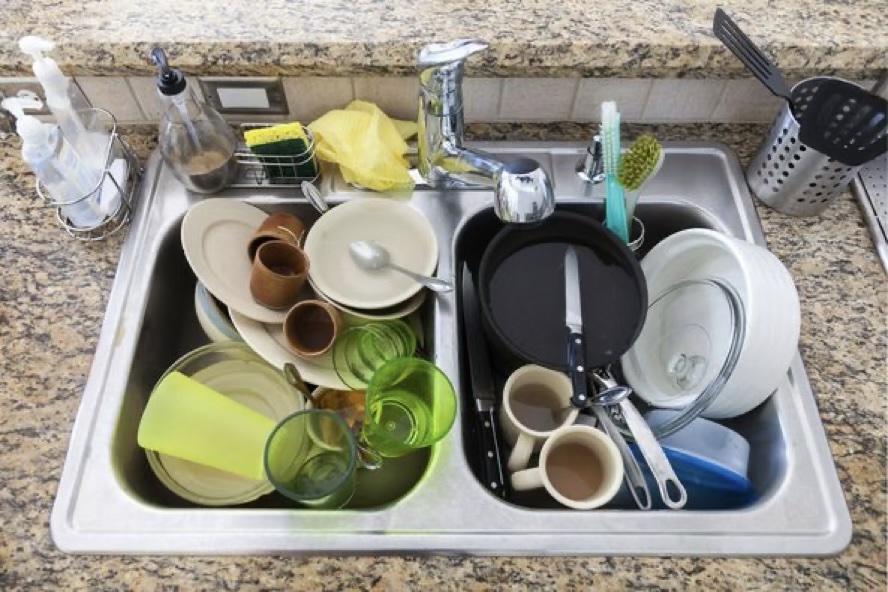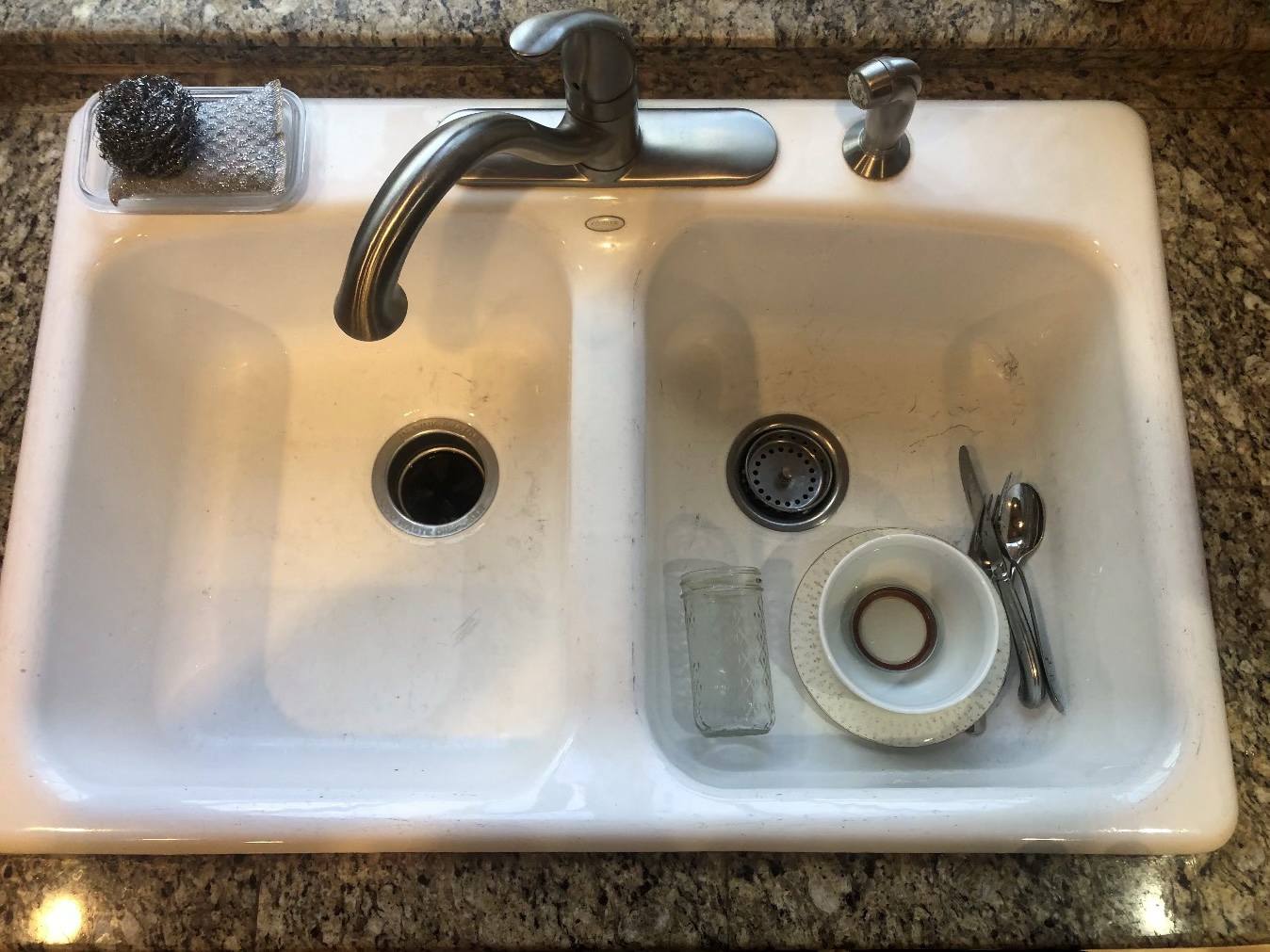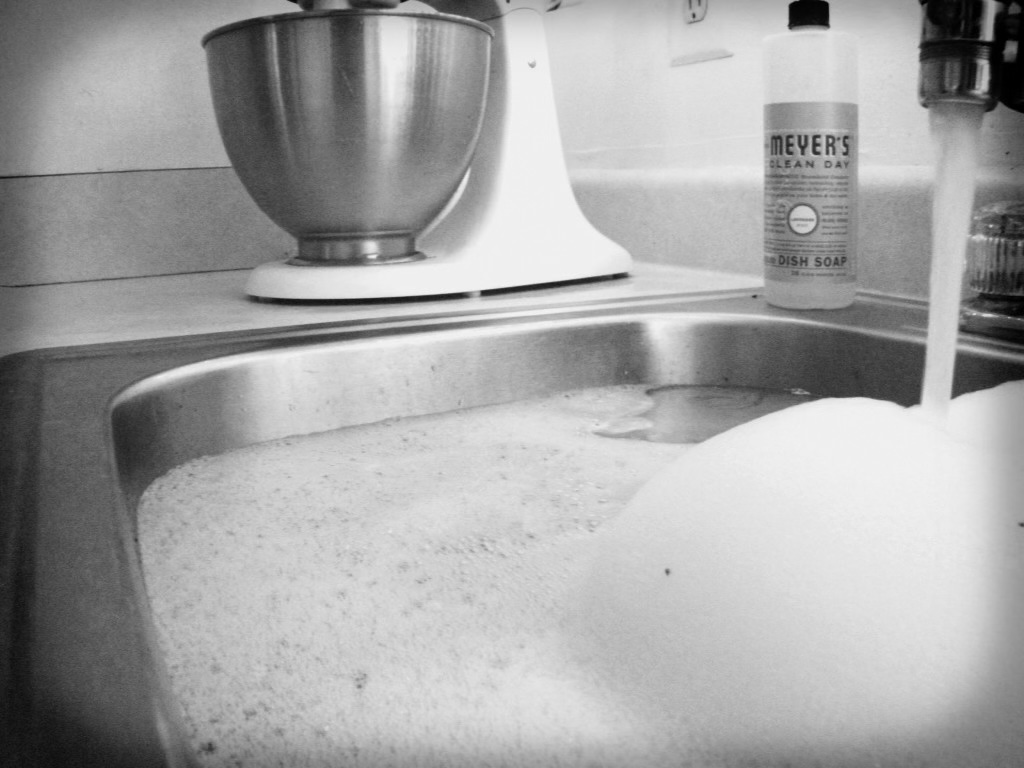Save TIME and ENERGY by Practicing SINKOLOGY!
Over the many years that I’ve consulted with folks regarding their clutter and space organization, I’ve noticed something consistently when they’ve shown me their kitchens. 100% of the time, anytime there are dirty dishes in the sink, there’s absolutely NO rhyme or reason as to how the sink is loaded.

Now you may be thinking, “HUH? How the sink is loaded? What difference does THAT make?” Well, it makes a huge difference as to the time and energy expended in doing the dishes. But besides that, a sink that’s randomly filled with dirty dishes is overwhelming. I’d almost be run over by a truck than face this mess day after day.
So let’s talk about the sink. I teach smart sink management in my “Clutter-FREE Forever!” classes, and I call it the principle of “Sinkology©.”

Sinkology says the sink is a S P A C E—just like any other space in your home. It holds things, just like your drawers and cupboards. And just as your drawers and cupboards have specific assignments and some organization to them, so should your sink space.
For instance, it’s common to have a cupboard assigned for dinnerware. These dishes are consistently placed in that cupboard, and typically in the same order or arrangement, over and over again. Below is my cupboard where I put our dinner plates. I’ve kept this arrangement for 25+ years now.

I’m not telling you how to arrange your spaces. I’m saying that you should have an arrangement—one that you use over and over again—for every single space in your home. Doing so saves so much time and energy when putting things away. You don’t even have to think about it.
So back to sink space. Sinkology also says that you’ll do yourself a big favor if you always rinse your dishes before stacking. Then you simply stack them the same way over and over. To do this, decide where you want the plates to sit; decide where you want the bowls to go; decide where you want the flatware to rest; decide where you want the dirty drinkware to go. And maybe consider stacking the dirty (but rinsed) pots and pans on the counter, next to the sink (since they’re such space hogs).
Sinkology says that for double sinks, it’s a best practice to avoid stacking anything at all in the side that holds your garbage disposal. This way you can easily rinse your dishes. “Easily” is the key word here. Research shows if things are easy to do, we’re more inclined to do them. Thus, make it easy to rinse your dishes. Below is an example of my sink stacking.

If I have bigger plates to stack, they’ll go under the small plate and the glass (it’s actually a jelly jar, but you get the idea) will be moved. If there were a lot of glasses, I would set them on the counter to the right. How you arrange your dirty dishes is up to you. The point is (and forgive me for beating a dead horse here), just have an arrangement and use it over and over.
This is a savvy way to manage your sink and dirty dishes even if you use rinse your dishes and immediately place them in the dishwasher. Consider those times when you’re baking or cooking. Fill your sink with hot sudsy water and then rinse your bowls, pans, and utensils and place them in the suds according to a pre-determined arrangement (yes, one that you use over and over). Functioning this way makes it super easy to load your dishwasher with all this stuff after your baking/cooking stint.

I’ll close with one last piece of sinkology practice: If you think this is something you’d like to try, you’ll want to be sure to orient everyone in your home who eats. Everybody’s gotta be on board with this routine for it to work. I hope you give this some serious consideration—you have nothing to lose and everything to gain (especially time and energy!).
 Alice Osborne
Alice Osborne
Weekly Newsletter Contributor since 2006
Email the author! alice@dvo.com
